In this article I am going to take you through how to use email marketing to grow your business.
First I’ll explain why email marketing can seriously help grow your business and then I’ll go through the 3 golden rules to unlock profit from your email list followed by 10 secrets to help you be successful.
At the end of this video you’ll know more about email marketing than 90% of business people.
So, let’s get into it…
Table of Contents
Watch The Video!
If you’d like to watch a video of this post on how to use email marketing to grow your business [Step 3] see below:
Why Email Marketing?
Let’s start with why email marketing can seriously help grow your business.
Firstly, from a return on investment point of view email marketing is pretty hard to beat.
dma.org.uk research shows that email marketing Return on investment is 32 to 1.
That’s $32 dollars back for every $1 invested.
Their research also revealed that the average email address is worth $37 dollars to a business.
This data is so strong because email engagement can be up to 20 times higher than social posts.
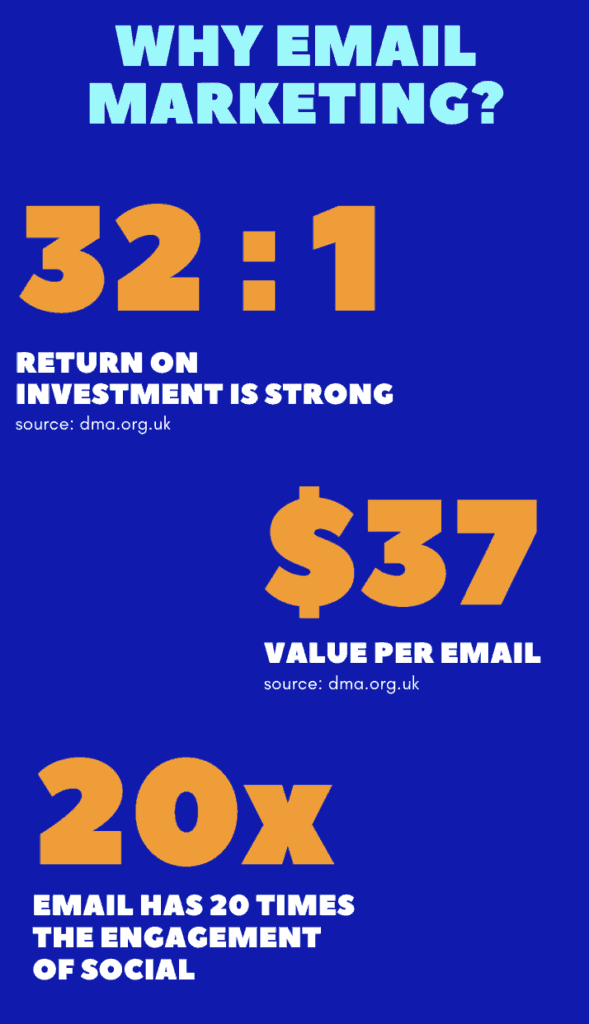
Those are very compelling stats for any business and certainly confirmed with my experience with email marketing.
I’ve sent literally hundreds of thousands of emails through my career and the results are always good if you follow some trade secrets and that’s what we’ll go through today.
First I want to take you through 3 golden rules of email marketing.
Three Golden Rules of Email Marketing
Golden Rule 1: Build a Relationship
Golden Rule number 1 is focus your email marketing efforts on building a RELATIONSHIP with your email list.
Don’t make every email you send about a special offer or discount.
If you do, overtime your list will get tired of only seeing discounts from you.
You need to ensure that you are sending a really healthy percentage of emails that add “value” for your potential customers.
Send your email list guides on how to solve a problem they might have or tips and advice on things that are relevant to your ideal customer.
To make sure you don’t fall into the trap of ONLY sending out emails with discounts or offers, map out what emails you are going to send over a course of a month or quarter.
My rule is that I like to send at least 75% “VALUE” add emails to the lists of clients I work with.
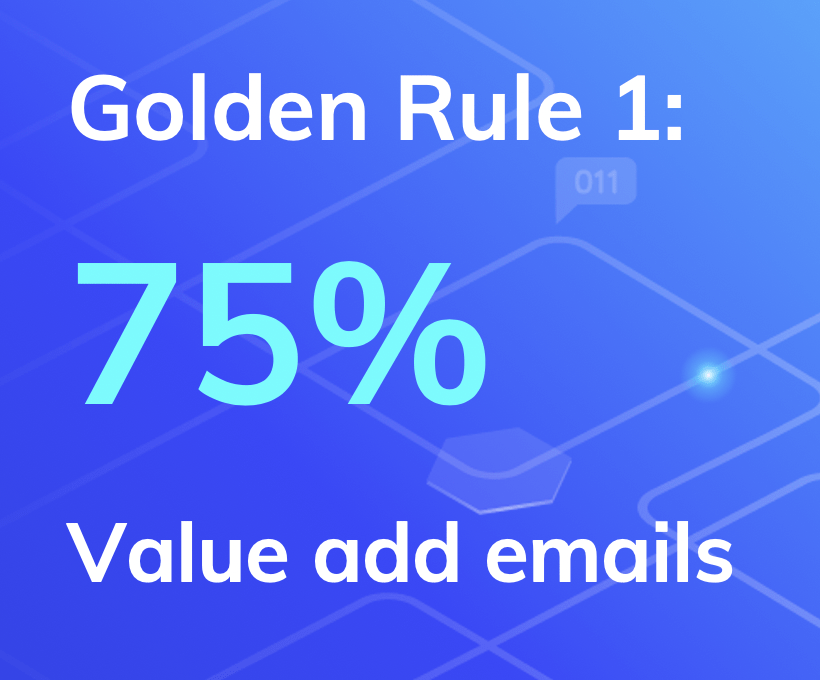
If you do this you will see your email open and engagement rates increase over time and you will be less likely to end up in SPAM folders because email service providers will see that your email list is opening your emails.
Now the other benefit of sending at least 75% VALUE emails is that you will be building a RELATIONSHIP with your email list.
Overtime your list will begin to know, like and trust you which will make your offer emails perform better when you send them.
So better open rate, better relationships and better conversions on your offer emails. Pretty powerful.
Golden Rule 2: Segment Your Email List
I cannot emphasise how important this is.
If you execute golden rule number 1 well your email automation service can track what each person on your list is reading and engaging with.
This will allow you to workout what each particular customers interests are.
You can then use this information to target the right offers to the right people.
To give you a simple example, if you had a pet shop you could send out an email with two separate articles on the perfect food for your dog and the perfect food for your cat.
Customers who interact with the dog food article are highly likely to have a dog so when you send out an offer email only send dog offers to these customers because cat owners won’t be interested in dog offers.
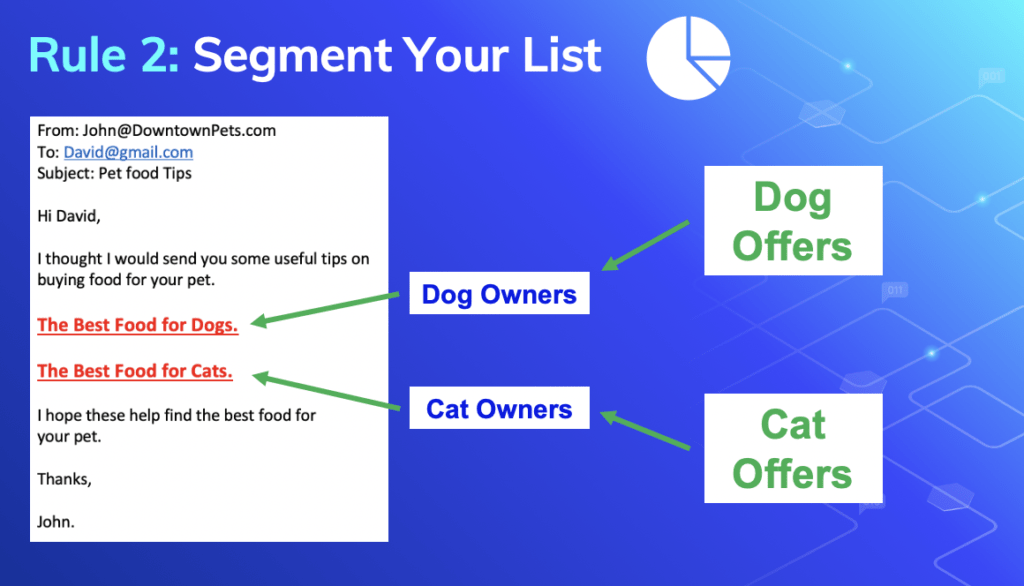
This will significantly improve your sales rate because your email list will be getting offers that are RELEVANT to THEM.
Amazon does this really well and its a powerful source of sales for them.
I recently was on their website looking at camera tripods.
About a day later I got an email with a full list of tripods I might be interested in.
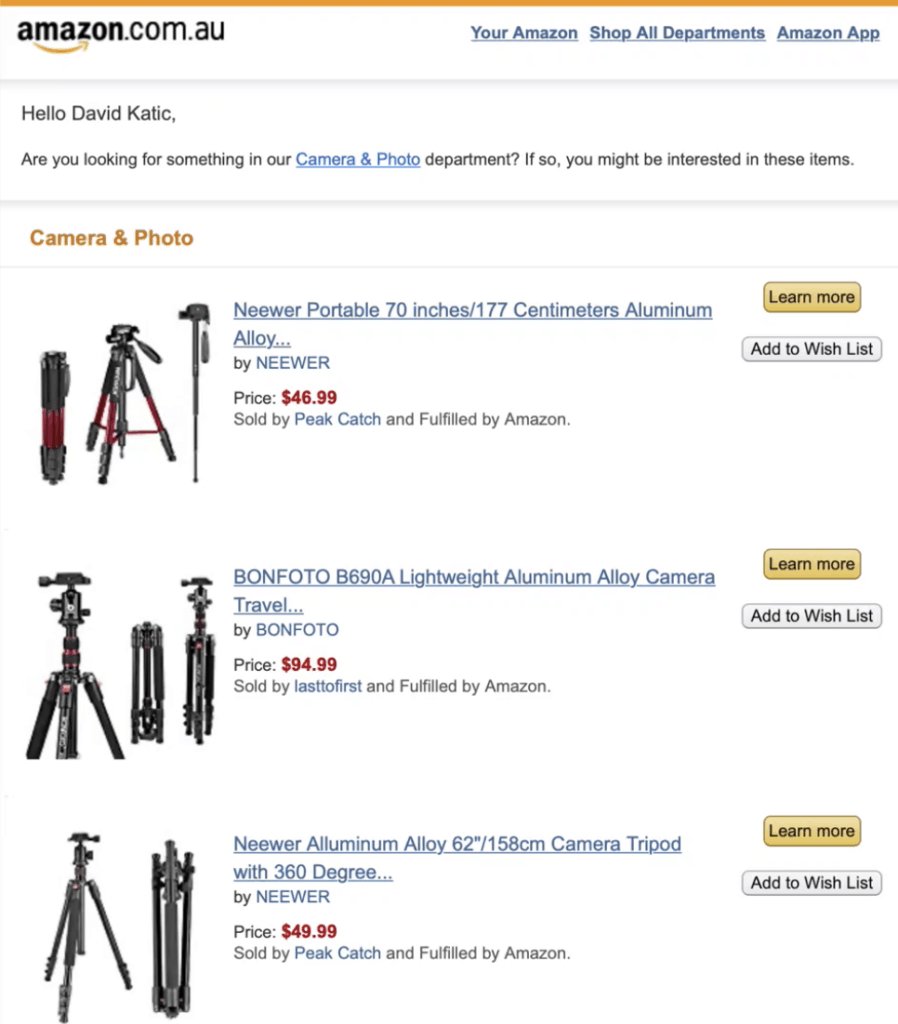
They clearly tracked what I looked at on their website and sent me an email with products that I am interested in.
Now don’t think that this type of targeting is only for big businesses.
Email automation services like ActiveCampaign allow you to segment customers and even track what your email list is interacting with on your website. You can then send emails based on these behaviours.
Pretty cool and I’m sure you can see how this could grow your business.
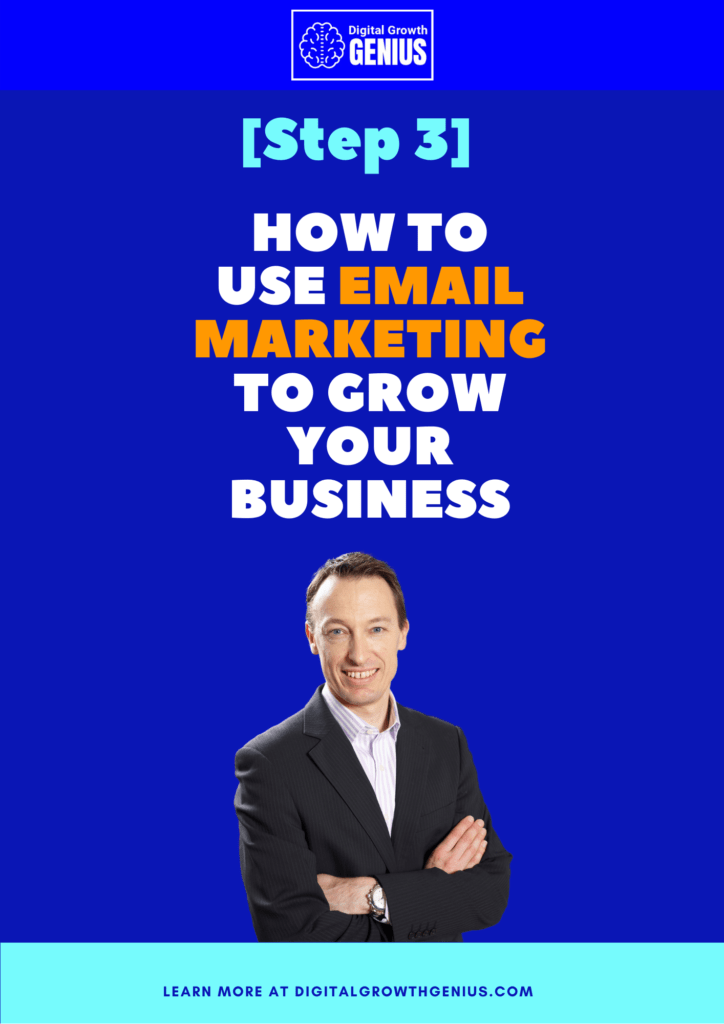
Golden Rule 3: Email Automation Sequences
Email services like ActiveCampaign allow you to setup an automated series of emails to build a relationship with your customer and sell.
When someone on your email list meets a certain criteria an automated series of emails is triggered. For example, if someone clicked on that article about dog food you could then trigger a series of emails about dog products.
Now, there are 4 automation sequences that you must have to grow with email.
1. Nurture automation sequence
This first is a NURTURE sequence that you put all new email subscribers through.
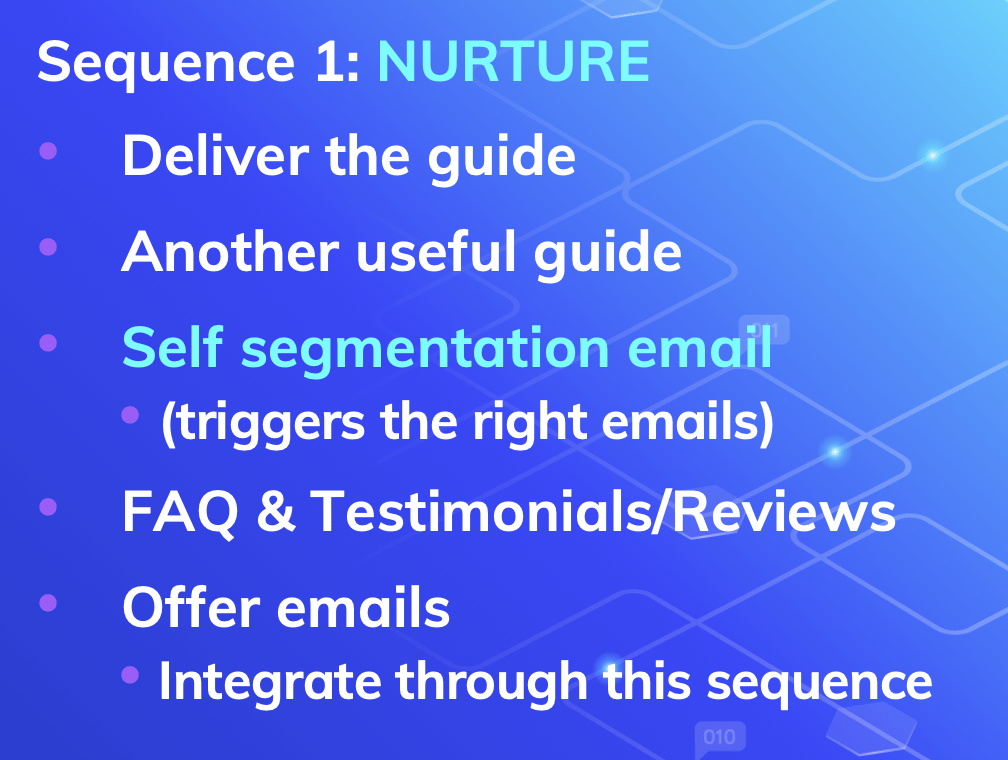
So, let’s say someone subscribes on an alcohol website to a guide about “how to choose the right wine with the right meal”.
The first email in this sequence is about delivering that guide because that’s what they asked for.
The second email should follow up with another useful guide that will HELP the customer.
Now, the third email in a nurture sequence is one of my favourites and it’s what I call the self segmentation email.
In the self segmentation email you ask the subscriber a question about what most interests them in your field.
So for example, a pet shop owner might send the following email:
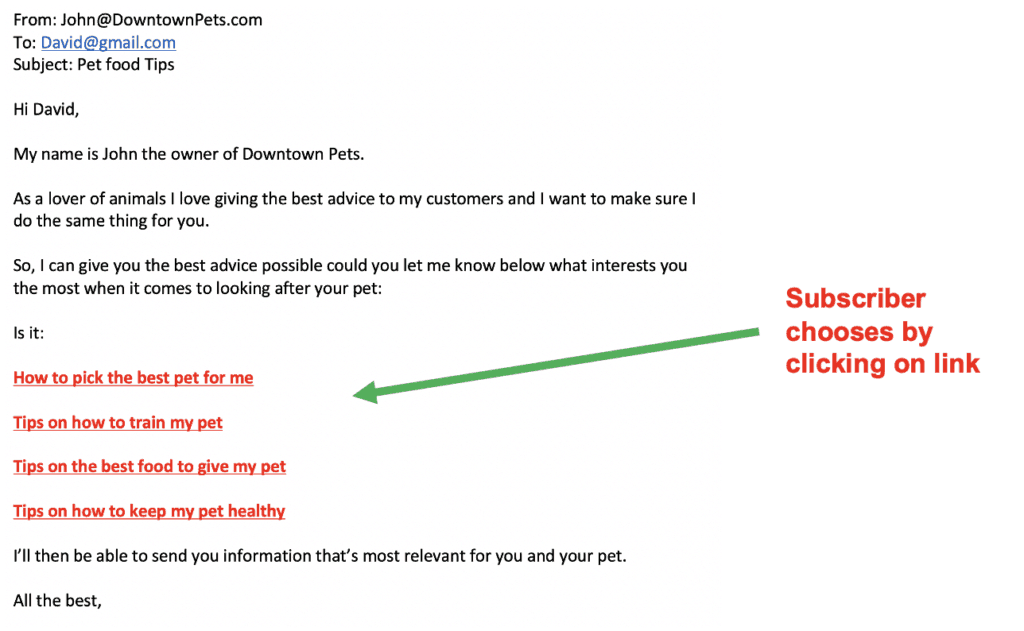
Whatever the subscriber chooses then triggers a series of emails around that topic.
I’m sure you can see how this approach allows you to tailor the right emails to the right subscribers.
The next step is to integrate a Frequently Asked Question email and a testimonial and customer review email into this nurture sequence to prove your expertise.
Finally, integrate emails with offers related to whatever it is that the potential customer said they were interested in.
If you follow these steps you will have a series of emails that builds trust with customers and primes them for a sale.
2. Cart abandonment automation sequence
The second email sequence is the cart abandonment sequence.
In this situation a potential customer may have added products or services to their checkout cart or booking page but not completed the sale.
If you have your tracking setup correctly you can trigger a series of emails that reminds these potential customers to complete their order.
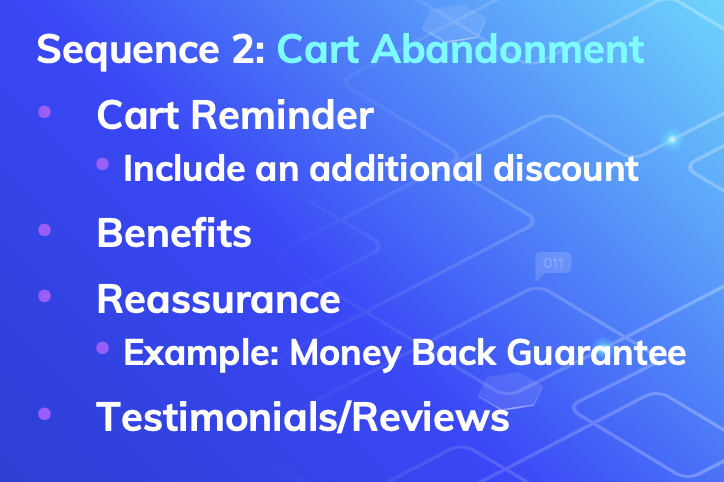
The first email in this sequence reminds them that they left their cart or booking page and invites them to come back and complete the process.
You could even include an additional discount to convince them.
If they don’t take action, the second email should remind them of the benefits of your products or services.
The third email should give them some sort of reassurance like reminding them of your money back guarantee,
And the final email should include some customer reviews and testimonials to reinforce your social proof.
Cart abandonment sequences work if they are done well.
3. Post Purchase automation sequence
The third email automation sequence is the post purchase series.
In this sequence your primary goal is to make sure the customer has an outstanding experience with your product or service because customer retention is always more profitable than continuing to find new customers.
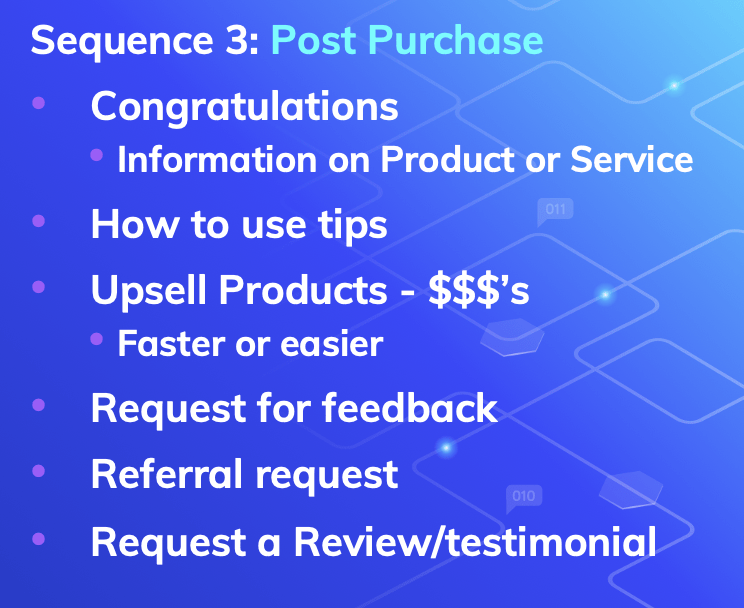
The first email is a congratulations email with any information they need for the product or service.
The second email should be some tips on how to use the product or service.
Often people get frustrated with a product or service because they aren’t using it the right way. Include some really detailed tips or examples of customers and how they used the product or service to achieve success.
The third email is another one of my favourites. In this email you offer customers an additional product or service that helps them use the first product better.
For example, if you sold makeup you might offer a brush to help apply the makeup better or faster.
If you keep the second product focussed on how it can make the first product faster or easier to use you’ll have some great selling opportunities.
The next email is a request for feedback on their purchase to help find any issues that may have arisen.
I cannot emphasise how important this email is because you need to have a feedback mechanism to identify and eliminate problems in your business so that you maximise customer satisfaction.
Follow this email up with a request for a referral and offer some sort of benefit if they refer a friend to your business.
Finally, request a review or testimonial and make sure you display these on your website.
If you do this sequence well you’ll have a customer for life and be generating additional revenue for your business.
4. Win Back automation sequence
The fourth and final email automation sequence is the win back series.
You should be able to workout which of your customers haven’t purchased from you before or in a while.
Put these customers into a specific email sequence designed to win them back and get them to purchase.
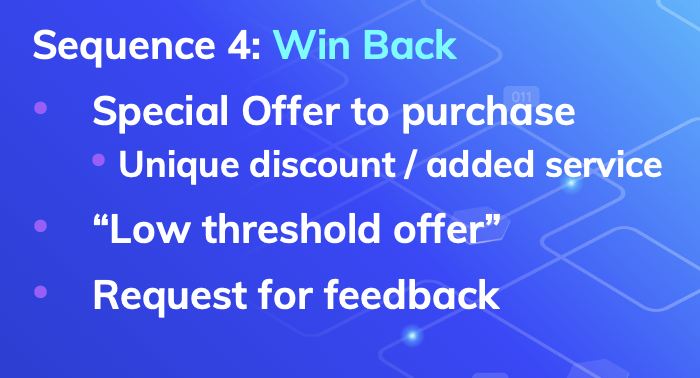
The first email should have a special offer to purchase. Think of a unique special discount or value add service you could provide them.
Also, make sure your offer is targeted around the interests that you have been tracking.
If they don’t take up this offer the second email should be what I call a “low threshold offer”.
Often customers are hesitant to take the first step with a business.
A low threshold offer is something that doesn’t require much from a customer but gets the ball rolling.
For example, a dog trainer might offer a free 20 minute phone consultation. This offer would give you the opportunity to interact with a potential customer and prove to them that you can help solve their problems.
The final email in this sequence is a request for feedback. You’ll be surprised what you learn in the responses to this email.
Alright, so there are my three golden rules of email marketing.
10 Email Marketing Secrets
Secret #1: Resend
This is a big one and a secret you’ll thank me for.
When you are setting up your email sequences set up a ‘resend’ of the email to all of the people who DIDN’T open up your email.
Change the title to something different because maybe your title didn’t resonate or simply your potential customers were too busy. Also remember to send it a day or two after the first email.
When I do this I take the percentage of people who see my email from 35% to 50%. That’s a MASSIVE difference.
Resend is absolutely essential so make sure you are doing this in your business because it drives additional profit.
Secret #2: Avoid Spammy Words
All email providers have aggressive SPAM filters. Words like Free, Guarantee, 100% Cheap or Apply Now, raise the eyebrows of SPAM filters.
If you check your own junk folder you’ll see some interesting examples of emails with a lot of SPAMMY words.
To help you understand what these words are here is a link to a list of SPAM words to be careful of. Here are a few examples:
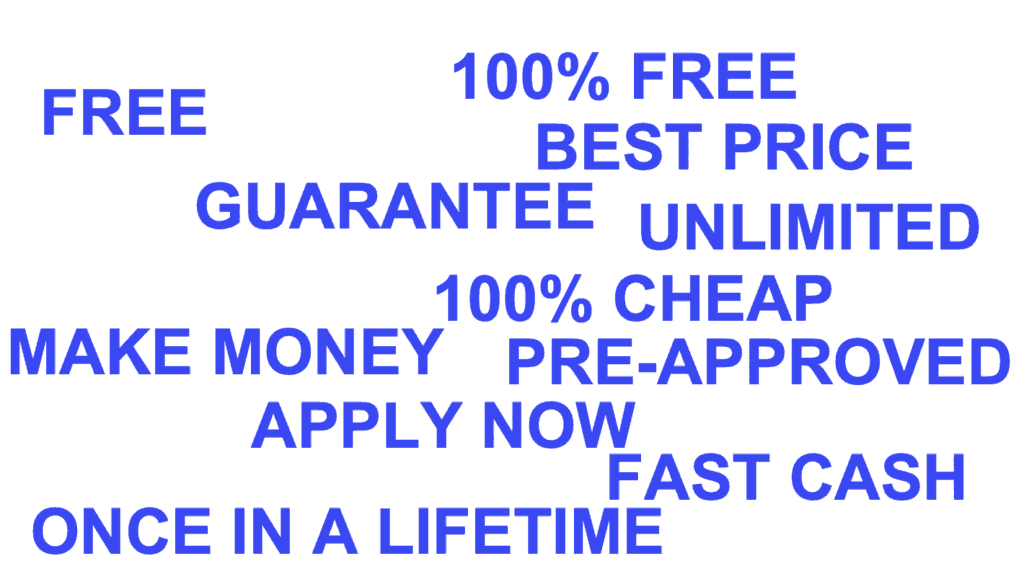
Now you can still use these words but be careful of the frequency and the context you use them in. If your email is littered with these terms you’ll get marked as SPAM and go straight to the junk folder.
Importantly, many email automation services like ActiveCampaign have automatic tools that scan your email and let you know if you will pass these spam filters so make sure you check them out.
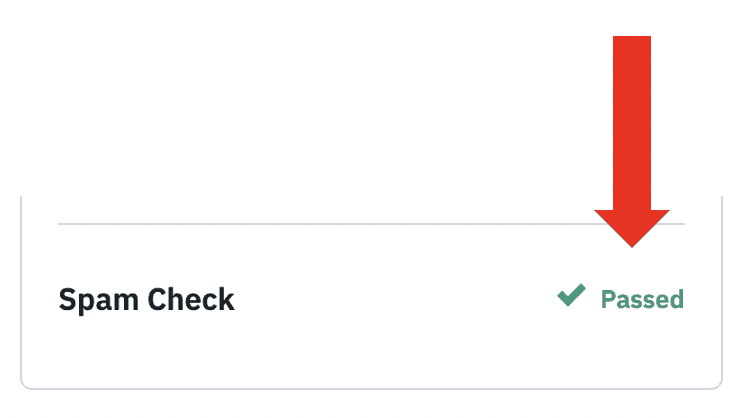
Secret #3: Sweat The Subject Line
Your subject line will massively impact your open rates.
I do a lot of testing of my subject lines and they prove you can get big variations in open rates depending on the subject line.
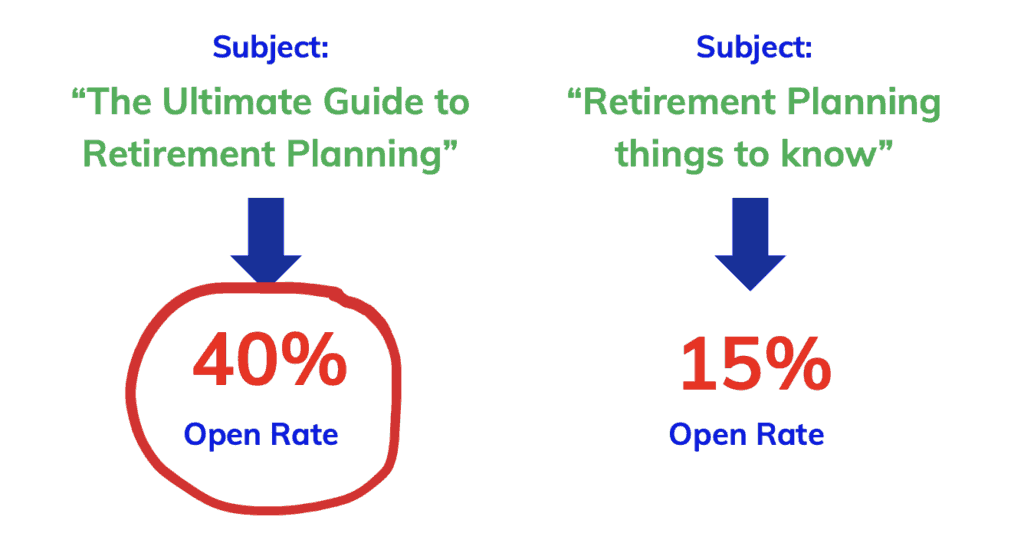
Think about what words really resonate with your customers, how you can create some intrigue and keep it short. Remember, long subject lines won’t display on mobile devices.
To help you I’ve got a download of awesome subject lines that will get you thinking.
Combine these with some testing and you’ll dramatically improve your open rates.
Secret #4: Use a "pS"
This is another secret little weapon that should be in every email you send.
Often potential customers skim emails all the way to the bottom so adding a PS is your opportunity to quickly summarise what’s in the email.
Also make sure you include a call to action in the PS so that potential customers know what you want them to do.
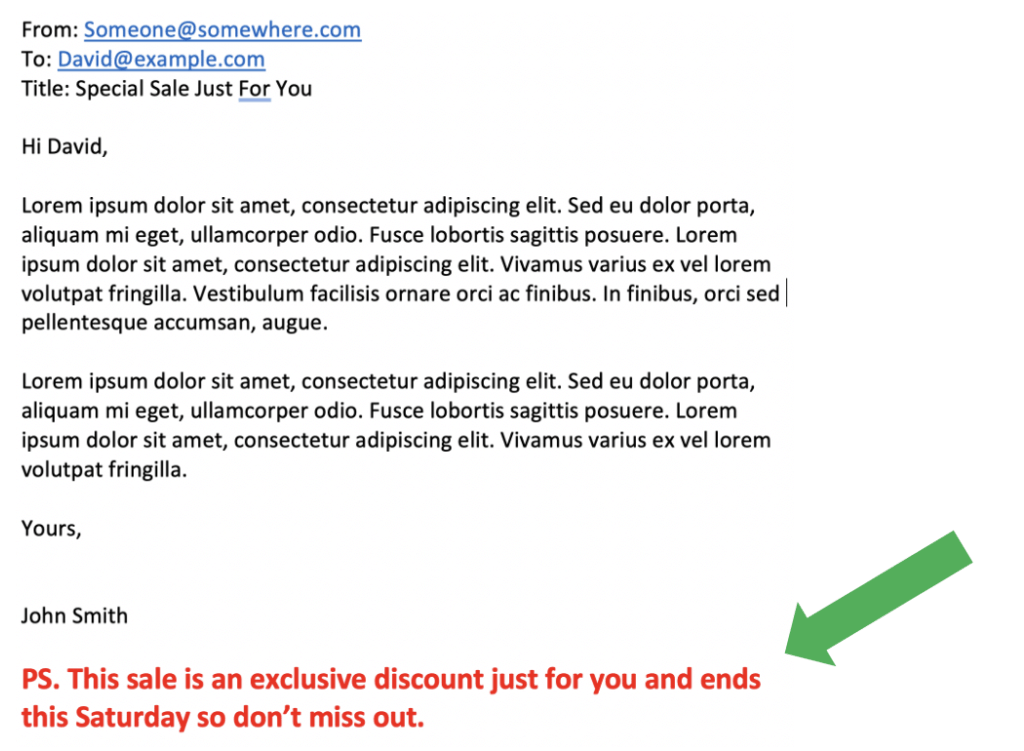
Secret #5: Be Human!
Don’t sound like some faceless corporation. Make sure the email comes from a real human with a name not “The Marketing Department”.
Also, make sure you use the potential customers name in the email. That’s how you would talk to your friends so why would you treat your subscribers differently.
Humans like dealing with humans and the more you behave like one in your email the more successful you’ll be.
Secret #6: Timing
This one tip can improve your email performance by around 10%.
You can improve your email open and click through rates by picking the right time to send an email.
Getresponse.com data shows that at around 6am and between 10am and 1pm drives the best open and click through rates.
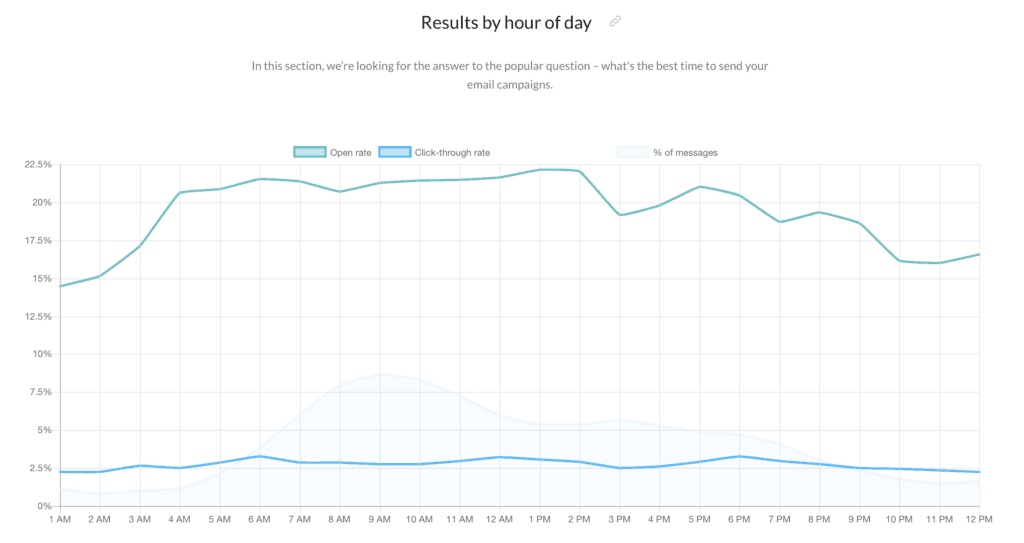
Monday through Friday are the best days of the week for open and click through rate.
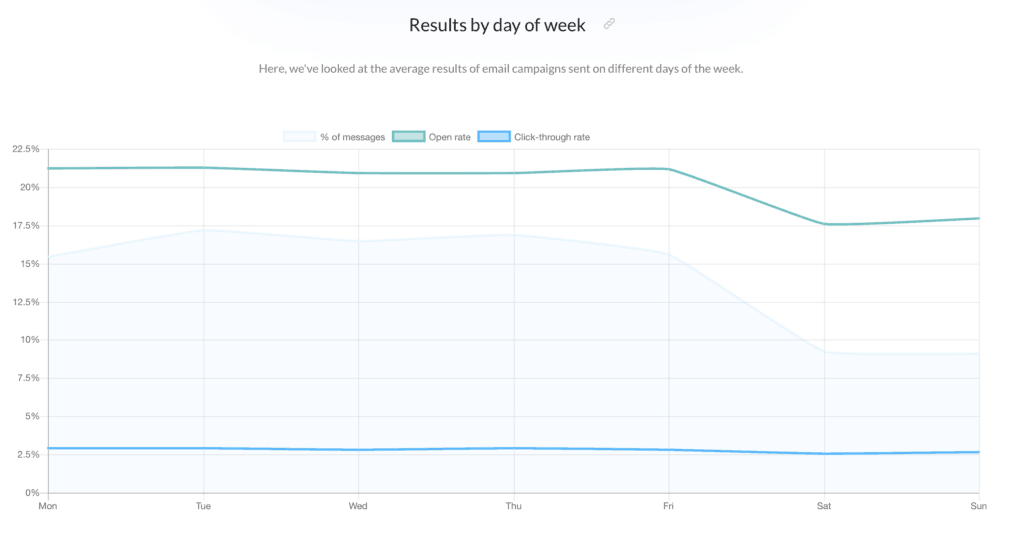
The best advice I can give you is to have a really good think about what might be the best time to send an email to your subscribers. Better still, experiment with delivery times to see what works best for your business.
Secret #7: Clean Your List
This one may cause you some pain but trust me it’s for the best.
Every list has some subscribers on it who just don’t open your emails.
If this is a big percentage of your list then it’s going to hurt your deliverability because the spam filters will notice that a lot of your emails aren’t getting opened.
Those SPAM filters may then decide that all of your emails are SPAM.
This is a big cause of poor open rates.
So, to improve my email deliverability I delete any subscriber who hasn’t opened an email in 3 to 4 months.
This will ensure that the people who are on your email list are engaged and opening your emails and therefore improve your overall deliverability to those people.
I know it sounds hard to delete email addresses you have fought hard to obtain but remember, you are deleting people who have generated nothing for your business and improving deliverability to the people who are interested in what you have to say.

Secret #8: Mobile Friendly
This seems so obvious but a lot of clients I work with don’t check how their email looks on a smartphone.
Given that at least 50% of your emails will be read on a mobile phone you’ve got to make sure it looks good on mobile.
Check your font size – I always use 16 point – and make sure it formats well on a mobile device. Poor formatting on mobile can kill your credibility.
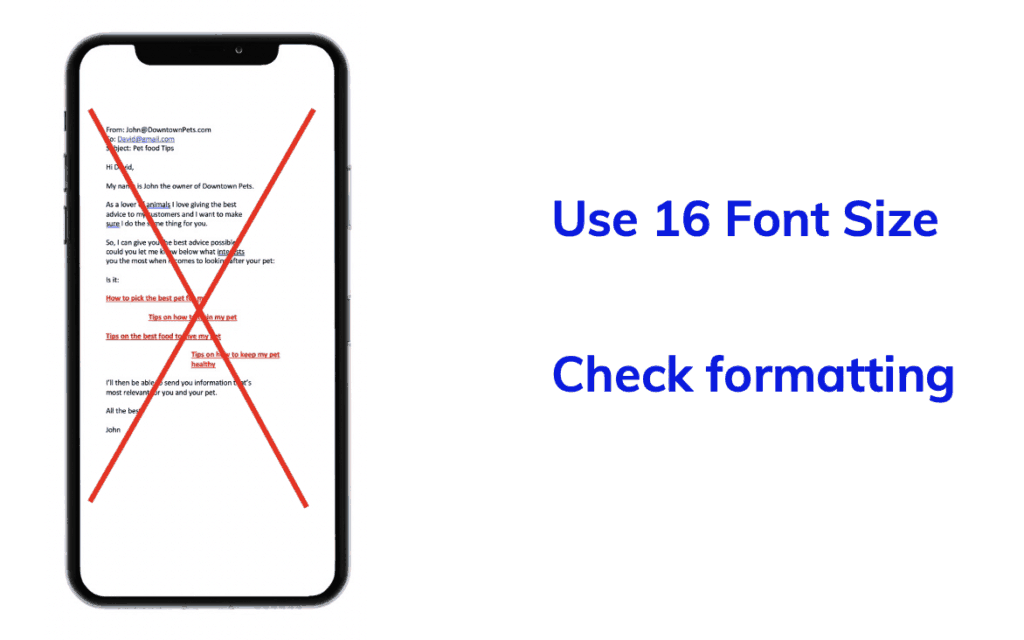
Secret #9: Ask A Question
Wherever possible, ask your readers a question in your email and ask them to hit reply with an answer.
There are two big advantages of doing this.
Firstly, you’ll open up a conversation with your potential customers and that can only be good.
Secondly, if the SPAM filters recognise that there is a dialog they will be less likely to put future emails from you in the SPAM folder. This is a great way to improve deliverability.
Secret #10: SPAM Folder Checks
We discussed a few times the need to avoid getting put into a subscribers SPAM folder.
Try as you might sometimes you just cannot avoid this.
To deal with this you need to remind your subscribers to check there SPAM folder just in case your emails are ending up there.
You can do this on your thank you page after someone signs up.
Also make sure you provide some instructions on how a subscriber can move your email from the SPAM folder to the inbox so you fix future deliverability issues.
If you do this you will improve your deliverability significantly.
As an extra bonus I’ve got 1 additional tip for you and that is to check your data and test, test test.
Many businesses don’t check things like open rates, click through rates and conversions so they just don’t know which emails are working and which ones aren’t.
If you watch the data closely and have a testing mindset you’ll quickly workout what works and what doesn’t and be able to adjust accordingly which can only be good for your business growth.
Wrap Up
So, there you have it, a guide on how to use email marketing to grow your business.
You’ve seen the stats on email marketing so the potential should be obvious.
If you execute the 3 golden rules and the 10 secrets well this could really be a great growth opportunity for your business.
I have developed a downloadable summary of this guide for you to refer to as you build your own email marketing plan.
This video is step 3 in my series on how to turn your website into a Marketing machine in 6 steps.
You can see the whole series by following this link.
See you in the next article.

